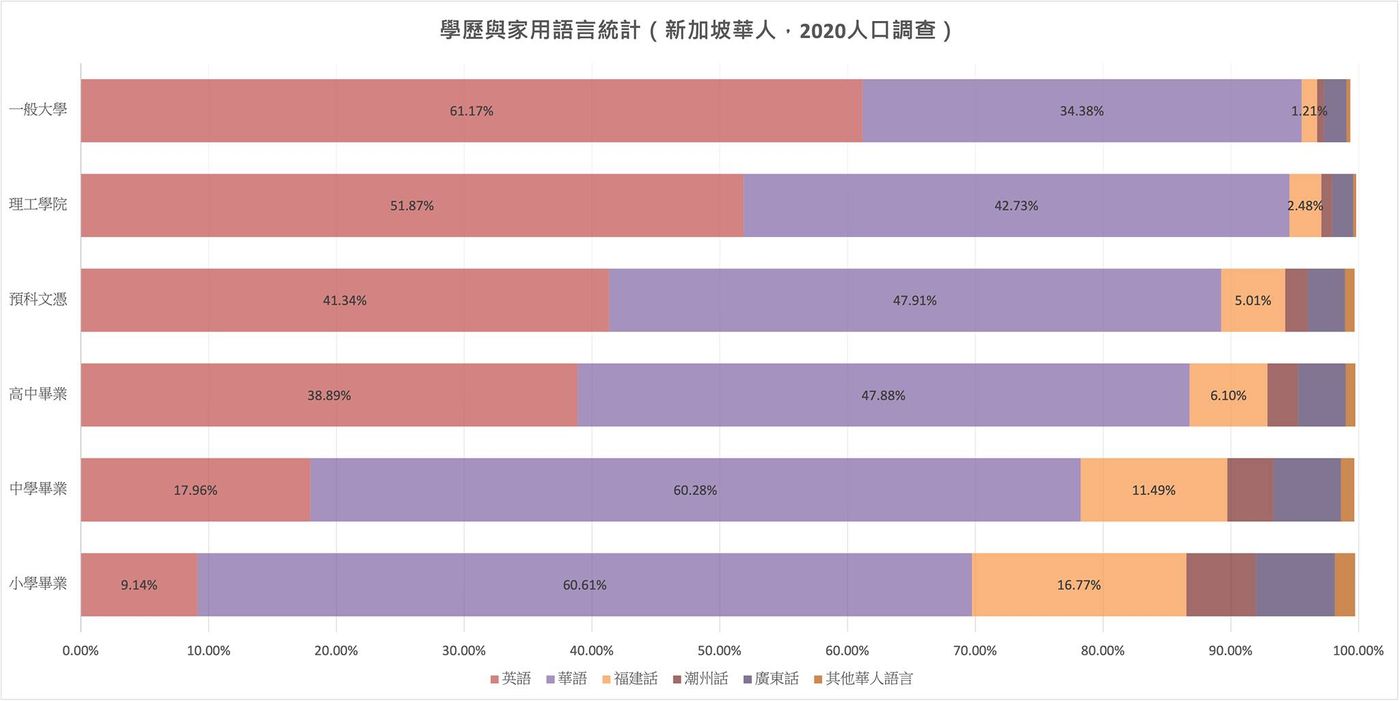
愛丁堡大學語言學博士
The latest census shows that fewer Chinese Singaporeans speak Chinese at home
Singapore released its 2020 census results last month, and one of the striking stats was the change from Chinese to English as the largest home language.

Regardless of ethnicity, in 2010, the most commonly used home language in Singapore was Chinese (calculated by the most commonly used), and a total of 35.6% of the population used Chinese at home. Ten years later, the most commonly used home language in Singapore became English. , a total of 48.3% of the people use English at home, an increase of as much as 16%, while the number of people who use Chinese at home has declined by 5.7%.
In addition to Chinese, all languages also declined in varying degrees. Other Chinese languages (including Hokkien and Cantonese) declined from 14.3% to 8.7%, Malay dropped from 12.2% to 9.2%, and Tamil used by Indians Language dropped from 3.3% to 2.5%, the smallest attenuation. From the data point of view, the growth of English mainly comes from the fact that Chinese or other Chinese languages are no longer the dominant language in Chinese families, and its dominant position is being transferred to English.
If you look at different ethnic groups, ten years ago, 32.6% of the Chinese people used English at home. Ten years later, this figure reached 47.6%, an increase of 15 percentage points. Chinese and other Chinese languages have a similar decline. 59.2% of Malay households speak English at home, up from 41.6% a decade ago.
In other words, despite the promotion of compulsory education in the mother tongue (ethnic language) in Singapore and the influence of the Chinese market, the use of Chinese has not shown an upward trend. And the mother tongue of other races also showed a downward trend. When the dominant language in the home is gradually consistent with the dominant language in the society, it shows that the overall society of Singapore is becoming monolingual.

It can be seen from another chart that makes statistics on Chinese people (the statistics are based on the language most commonly used at home, so if Chinese are the most commonly used and English is also used, it will be counted as Chinese data), the higher the degree of Chinese, the more They tend to use English at home. 61.17% of Chinese who have graduated from college will speak English most often at home, only 34.8% will use Chinese most often at home, and the proportion of Hokkien at home is as low as 1.2%. Furthermore, 16.77% of Chinese who graduated from primary school will use Hokkien most often at home.
In other words, from the perspective of image planning, the Speak Mandarin movement over the decades has not only failed to shape Mandarin into an image that the more educated you will be able to use, nor has it turned Mandarin into an intimate language, but has also transformed other Chinese languages. Drag into the water together.
The information on this degree needs to be compared with the information on age. Those who are interested can go to the Singapore government website to find the census report released this year, which contains detailed data.
Like my work?
Don't forget to support or like, so I know you are with me..
Comment…